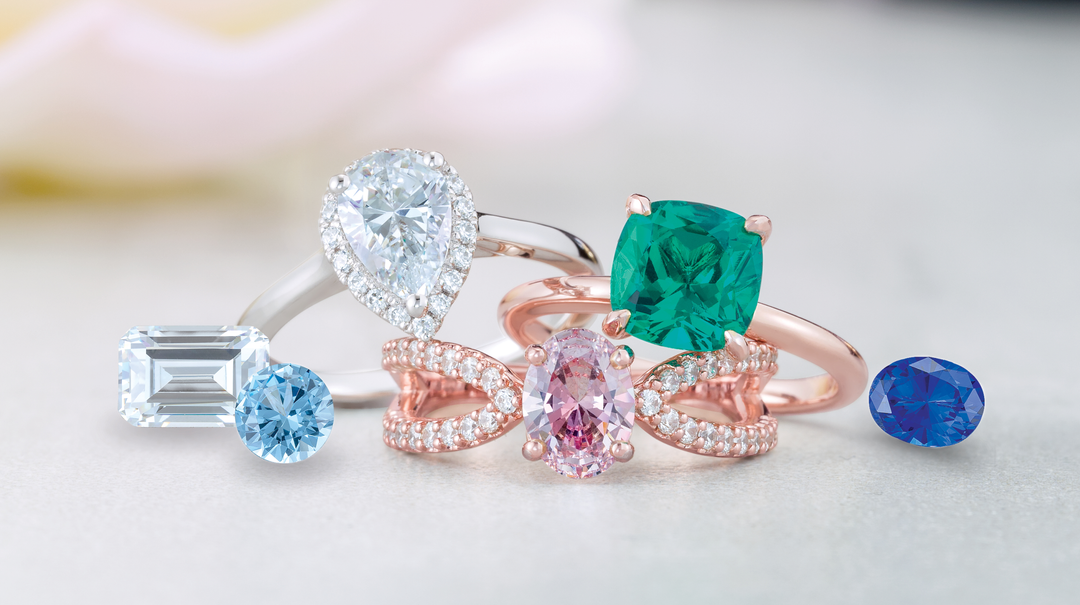
Diamonds have fascinated humanity for centuries, symbolizing beauty, strength, and everlasting love. Whether shopping for an engagement ring or a special gift, understanding the quality of a diamond is essential. The universally recognized standard for evaluating diamonds is the 4Cs: Cut, Color, Clarity, and Carat weight. With the rise of man made diamonds, these criteria remain just as relevant, helping buyers appreciate and select lab-grown stones with confidence. This article explores the 4cs of diamonds and explains how they apply to man made diamonds, offering insight into this modern gemstone choice.
Table of Contents
What Are Man Made Diamonds?
Man made diamonds, also known as lab grown or lab created diamonds, are diamonds produced in controlled laboratory environments that replicate the natural processes that create diamonds beneath the Earth’s surface. These diamonds have identical physical, chemical, and optical properties to mined diamonds. The term “man made diamonds” emphasizes their human-engineered origin without compromising on quality or beauty.
Because man made diamonds are grown rather than mined, they offer several benefits, including ethical sourcing, reduced environmental impact, and generally lower prices. Understanding how the 4Cs apply to man made diamonds helps buyers make informed decisions when choosing this sustainable and stunning alternative.
The 4Cs Explained
The 4Cs—Cut, Color, Clarity, and Carat—are the universal language of diamond grading. They provide a standardized way to evaluate and compare diamonds regardless of origin, including man made diamonds.
Cut
The cut of a diamond refers to how well the diamond’s facets interact with light. It is the most important factor affecting a diamond’s brilliance and sparkle. A well-cut diamond reflects light internally and externally, producing dazzling fire and scintillation.
Man made diamonds can be precisely cut using advanced technology, ensuring excellent light performance. The cut grade ranges from Excellent to Poor, with higher grades offering more brilliance. Even though the diamond is lab grown, a poor cut will diminish its beauty, so it’s crucial to select a stone with a superior cut grade.
Color
Color grading evaluates the absence of color in a diamond. The scale runs from D (colorless) to Z (light yellow or brown). Colorless diamonds (D-F) are the rarest and most valuable, while diamonds with slight tinting become more affordable.
Man made diamonds are typically available in a wide range of colors on this scale. In fact, lab grown diamonds can be engineered to have exceptional color grades, sometimes even better than many natural diamonds, due to the controlled growth environment.
Clarity
Clarity measures the presence of internal inclusions or external blemishes. The clarity scale ranges from Flawless (no inclusions visible under 10x magnification) to Included (inclusions visible to the naked eye).
Since man made diamonds are grown under controlled conditions, they often exhibit fewer inclusions and higher clarity grades than natural diamonds. However, inclusions can still occur and affect the diamond’s appearance and value. Careful grading ensures that buyers understand the clarity of their man made diamond.
Carat Weight
Carat refers to the weight of the diamond, with one carat equaling 200 milligrams. Larger diamonds are rarer and typically more valuable, but carat weight alone does not determine beauty or quality.
Man made diamonds are often more affordable per carat, allowing buyers to choose larger stones within their budget. This makes man made diamonds a popular choice for those seeking impressive size without the premium cost of mined diamonds.
How the 4Cs Impact Man Made Diamonds
When considering man made diamonds, the 4Cs offer a clear framework to evaluate quality. Because man made diamonds have identical properties to natural diamonds, they are graded using the same criteria and by the same gemological laboratories.
One advantage of man made diamonds is the ability to control the growth process, often resulting in stones with fewer imperfections and better color. However, the importance of cut remains paramount in maximizing brilliance.
Man made diamonds offer buyers the chance to prioritize certain Cs based on personal preference. For example, someone may choose a slightly lower color grade to afford a larger carat weight or focus on an excellent cut to maximize sparkle.
Benefits of Choosing Man Made Diamonds
Aside from their beauty and quality, man made diamonds provide distinct advantages thanks to the 4Cs framework.
Ethical sourcing is a major benefit. Unlike some natural diamonds, man made diamonds are guaranteed conflict-free and free from mining-related human rights concerns.
Environmental impact is also significantly reduced. The energy and resources required to create man made diamonds in labs are far less than those used in mining operations, making man made diamonds a more sustainable choice.
Financially, man made diamonds offer better value for carat weight and quality. This affordability allows buyers to select higher grades in cut, color, or clarity than might be possible with natural diamonds at the same price point.
Conclusion: Choosing the Right Diamond for You
Understanding the 4Cs is essential whether purchasing natural or man made diamonds. Man made diamonds meet the same high standards, delivering beauty, brilliance, and durability. Their ethical and environmental benefits, combined with cost savings, make man made diamonds an increasingly popular and sensible choice.
When shopping for your perfect diamond, focus on what matters most to you—whether that’s the fiery brilliance of the cut, the purity of color, the clarity grade, or the size of the stone. Man made diamonds offer flexibility to customize your priorities without compromise.




